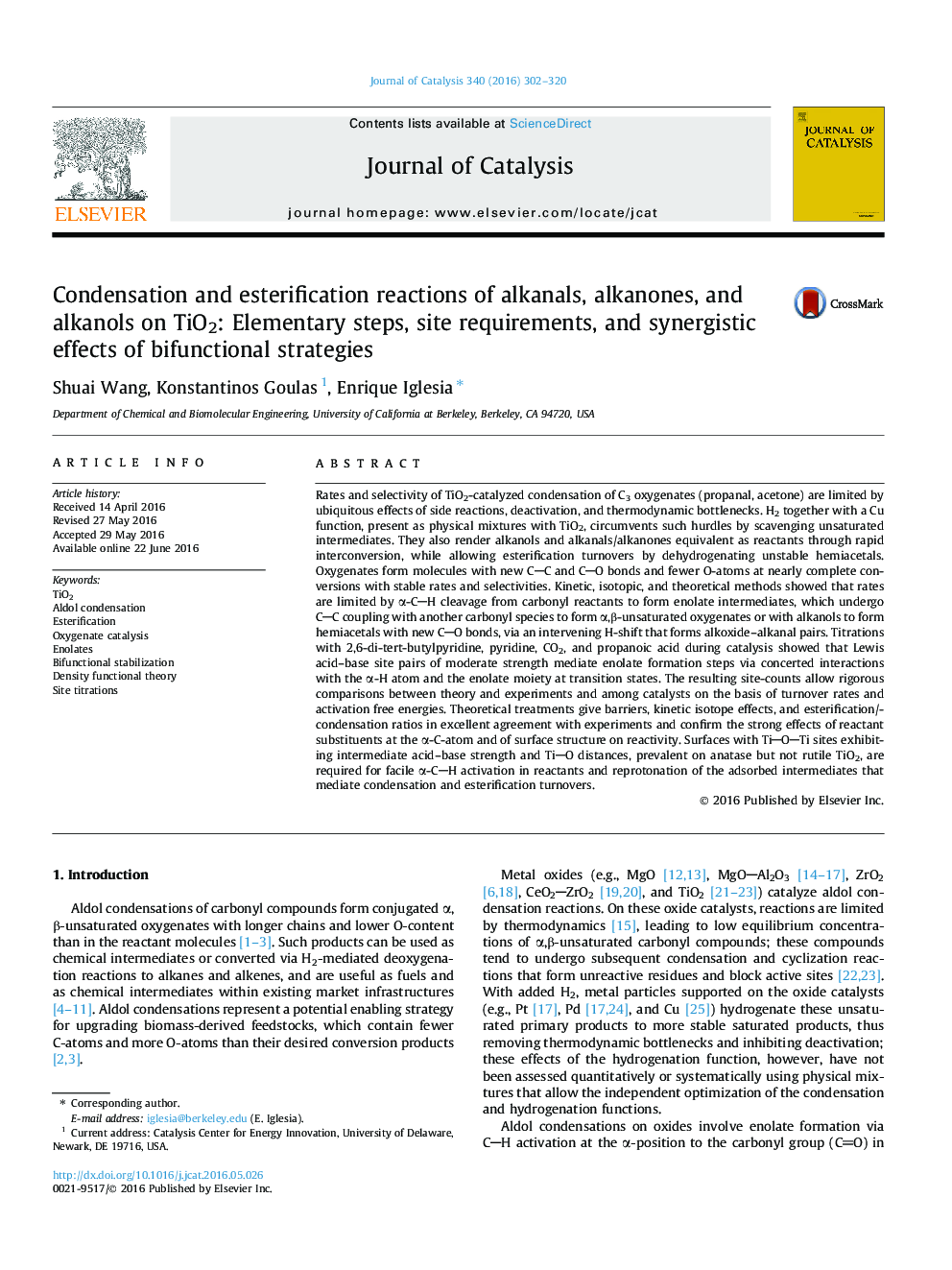| کد مقاله | کد نشریه | سال انتشار | مقاله انگلیسی | نسخه تمام متن |
|---|---|---|---|---|
| 60532 | 47535 | 2016 | 19 صفحه PDF | دانلود رایگان |

• Rate, selectivity, and stability in condensation/esterification improved by bifunctional strategies.
• Number and type of active TiO site pairs determined by titrations during catalysis.
• Enolate formation is the common kinetically-relevant step.
• Enolates form CC and CO bonds via reactions with alkanal/alkanones and 1-alkanols, respectively.
• Suitable acid–base distance and moderate strength are required for active acid–base site pairs.
Rates and selectivity of TiO2-catalyzed condensation of C3 oxygenates (propanal, acetone) are limited by ubiquitous effects of side reactions, deactivation, and thermodynamic bottlenecks. H2 together with a Cu function, present as physical mixtures with TiO2, circumvents such hurdles by scavenging unsaturated intermediates. They also render alkanols and alkanals/alkanones equivalent as reactants through rapid interconversion, while allowing esterification turnovers by dehydrogenating unstable hemiacetals. Oxygenates form molecules with new CC and CO bonds and fewer O-atoms at nearly complete conversions with stable rates and selectivities. Kinetic, isotopic, and theoretical methods showed that rates are limited by α-CH cleavage from carbonyl reactants to form enolate intermediates, which undergo CC coupling with another carbonyl species to form α,β-unsaturated oxygenates or with alkanols to form hemiacetals with new CO bonds, via an intervening H-shift that forms alkoxide–alkanal pairs. Titrations with 2,6-di-tert-butylpyridine, pyridine, CO2, and propanoic acid during catalysis showed that Lewis acid–base site pairs of moderate strength mediate enolate formation steps via concerted interactions with the α-H atom and the enolate moiety at transition states. The resulting site-counts allow rigorous comparisons between theory and experiments and among catalysts on the basis of turnover rates and activation free energies. Theoretical treatments give barriers, kinetic isotope effects, and esterification/condensation ratios in excellent agreement with experiments and confirm the strong effects of reactant substituents at the α-C-atom and of surface structure on reactivity. Surfaces with TiOTi sites exhibiting intermediate acid–base strength and TiO distances, prevalent on anatase but not rutile TiO2, are required for facile α-CH activation in reactants and reprotonation of the adsorbed intermediates that mediate condensation and esterification turnovers.
Figure optionsDownload high-quality image (114 K)Download as PowerPoint slide
Journal: Journal of Catalysis - Volume 340, August 2016, Pages 302–320